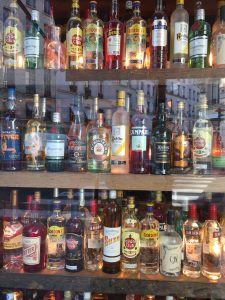
DAY 3
We were out of the hotel before 10 after a breakfast of yogurt for me and protein powder for Anna. We passed a small embroidery shop where I couldn’t resist buying a few items for future projects.
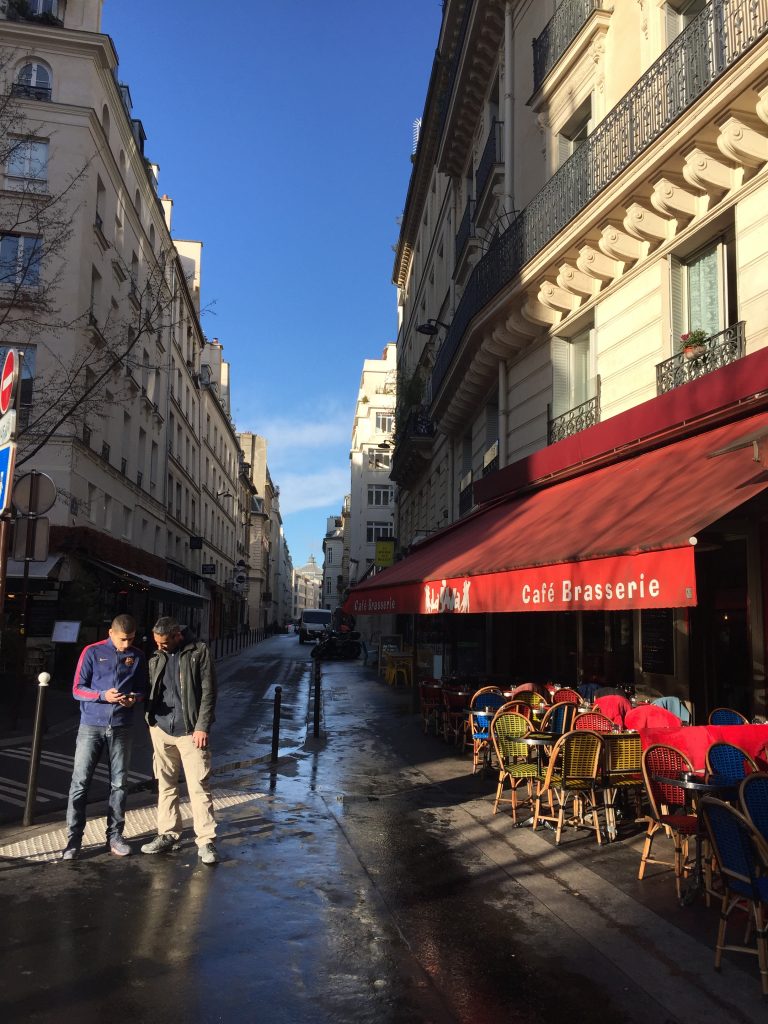
We were bound for Pere Lachaise cemetery and we were going on the Metro. Anna negotiated the ticket machine. You can travel anywhere on the Metro for 1.80 Euros. No wonder every train is packed – it’s so cheap. Not only is every train packed but we never had to wait more than 3 minutes for a train during the entire week. We travelled 9 stops and exited a spotless station into the bright sunlight and found ourselves right at the entrance to Paris’s most famous resting place. We took a photo of the large map on the entrance gate but when we tried to locate the graves we wanted to see we had little success. With more than 3.5 million visitors annually, it is the most visited necropolis in the world but we passed many other tourists staring confusedly at their phones trying locate tombs they were hoping to visit but there were no docents around or signs to specific graves.
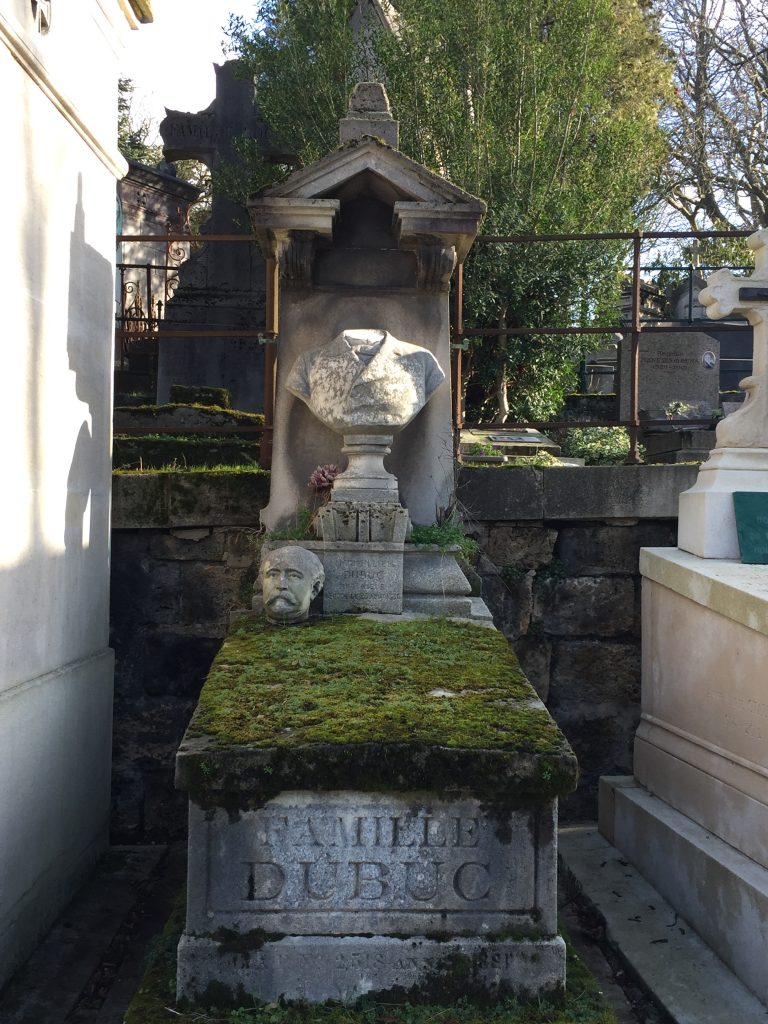
Don’t lose your head 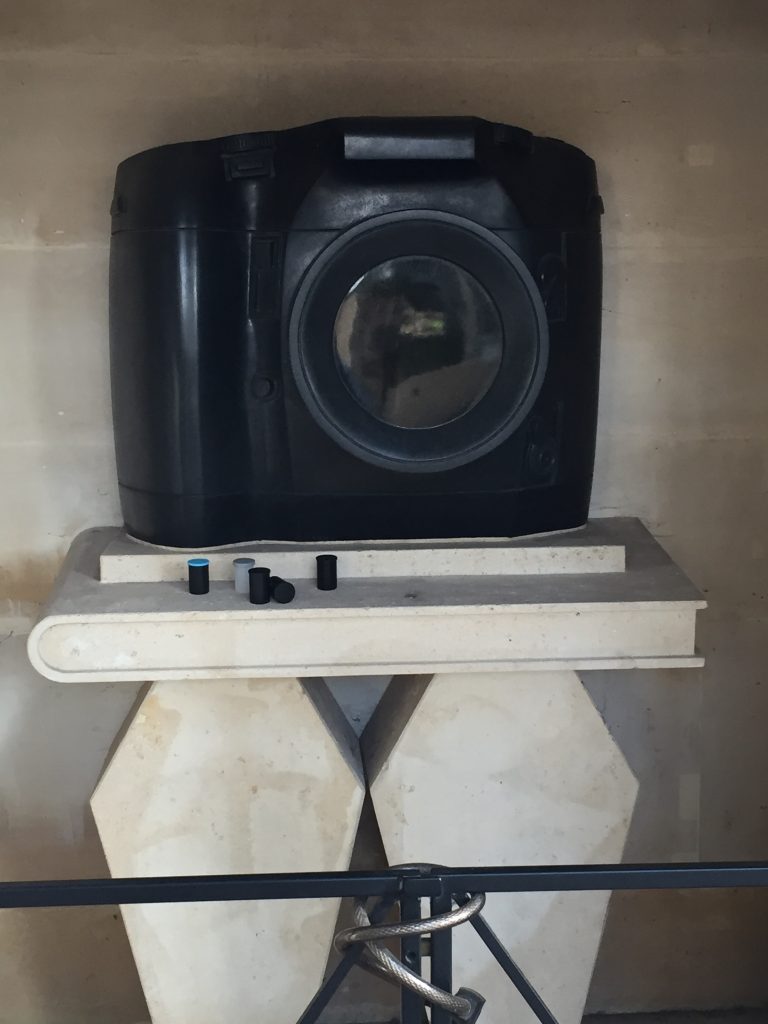
Interesting . . . 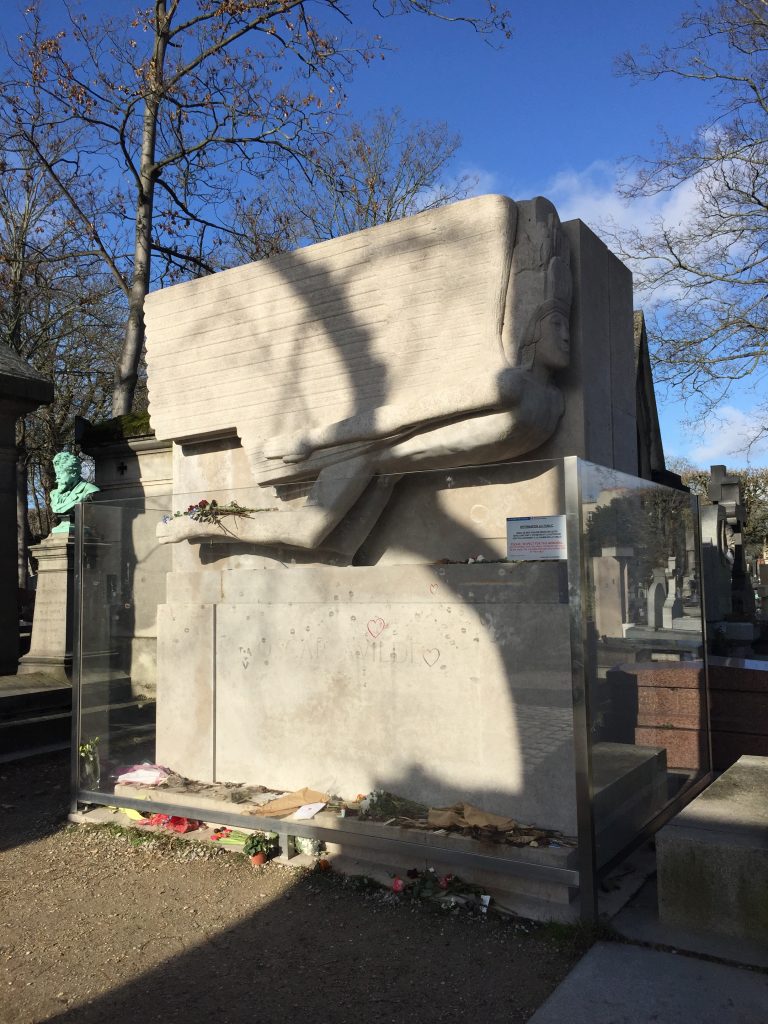
Grave of Oscar Wilde
The grave sites at Père Lachaise range from a simple, unadorned headstone to towering monuments and even elaborate mini chapels dedicated to the memory of a well-known person or family. Many of the tombs are about the size and shape of a telephone booth with just enough space for a mourner to step inside, kneel to say a prayer, and leave some flowers.
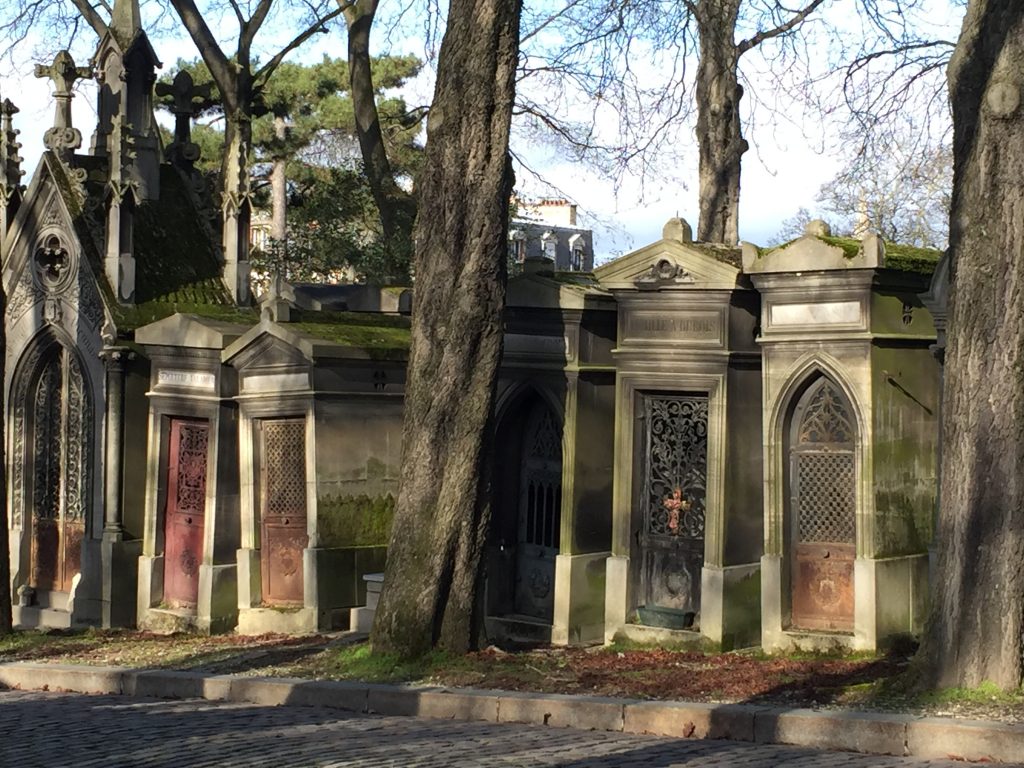
Nobody can say for certain how many people are buried here, but estimates vary from 300,000 to 1,000,000. We knew that some of the most visited graves are those belonging Jim Morrison and Oscar Wilde. Eventually we found Oscar Wilde’s – a rather odd sculpture. The tomb, designed by Jacob Epstein in 1914, features the sculpture ‘Modernist Angel’, which is roughly three meters tall and very impressive. It is surrounded by glass and a sign reads Don’t deface the glass because the Wilde family are responsible for the clean-up. Many Metro tickets had been thrown into the glass enclosure, along with a few letters. Apparently the tomb gets around a thousand visitors per day but there were only a couple of people there besides us. Even Jim Morrison’s grave was hard to find.
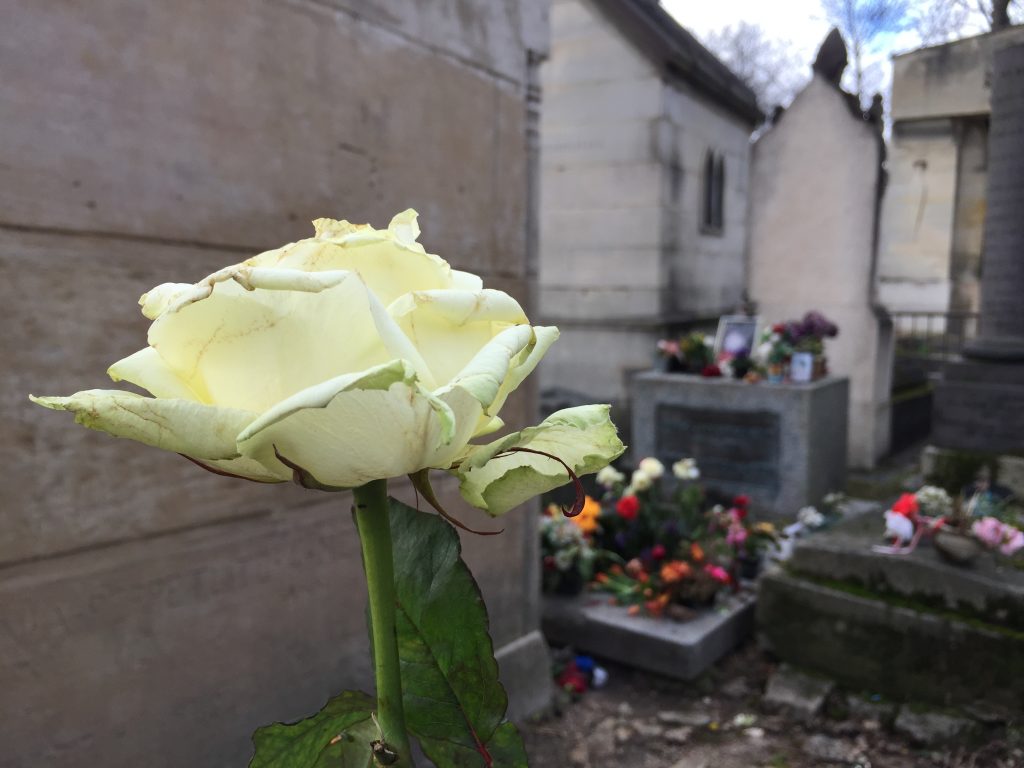
It’s tucked in behind others and covered with many flowers, and a bamboo screen covered in chewing gum (!) .
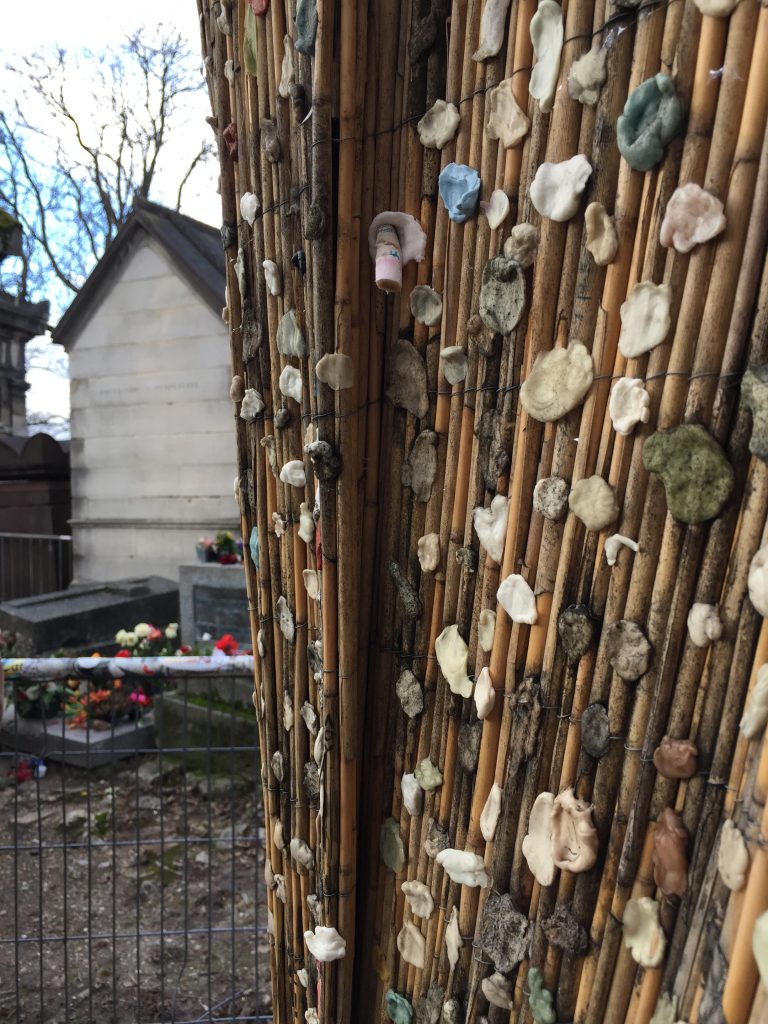
Soon after Morrison died (in Paris, of a suspected drug overdose), his body was placed in an unmarked grave in the cemetery. When the decision was made to mark the grave with a simple sign it was promptly stolen. After the same thing happened to a bust of the musician, a guard was installed to ensure that visitors did not deface or destroy the grave in any way. The final resting place of Chopin and Edith Piaf were on my list but we’d just about given up trying to find them when we were approached by a gentleman, dressed in black, who introduced himself as Rafael.
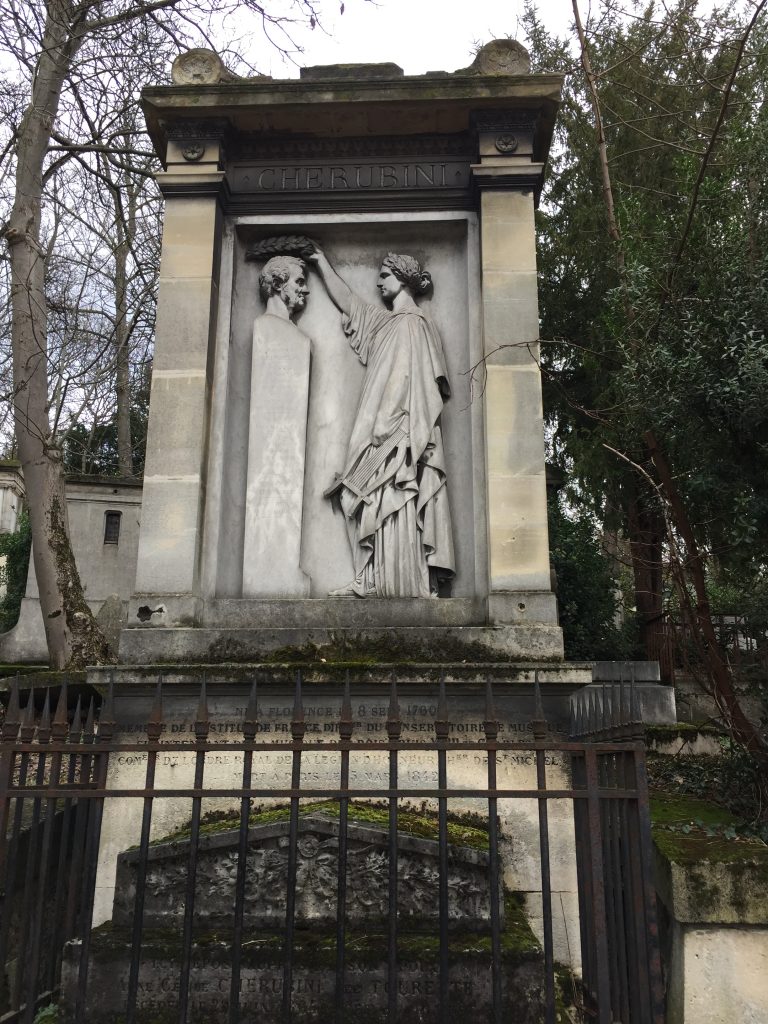
Grave of Cherubini 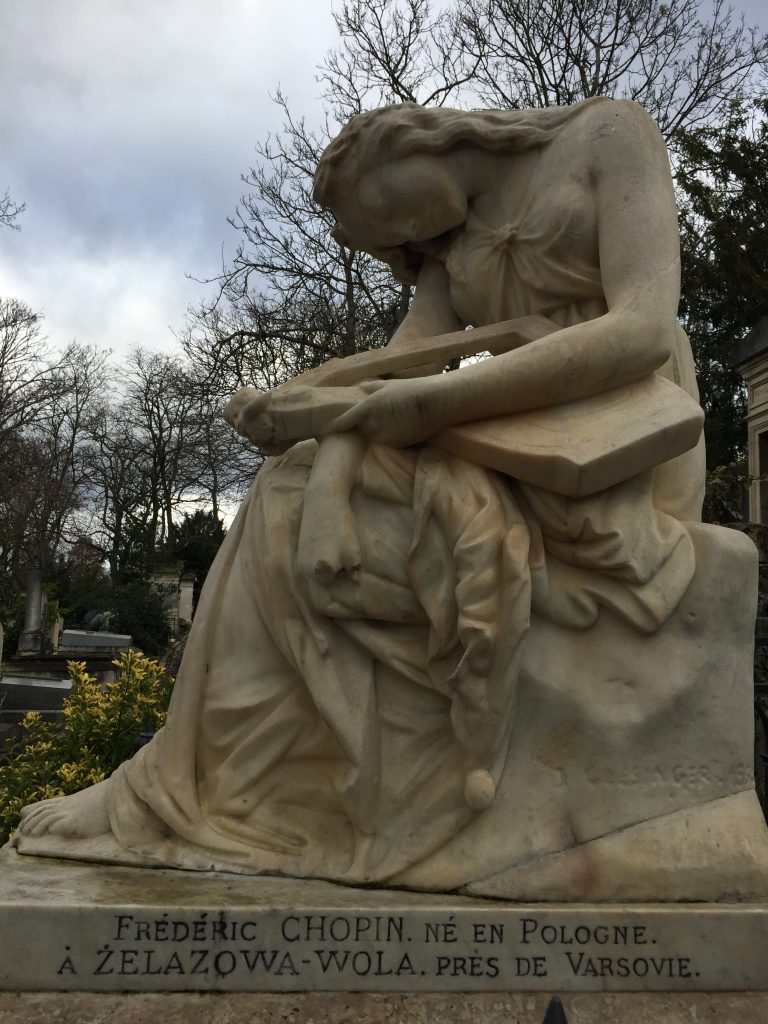
Grave of Chopin
“You are looking for the grave of Chopin? I will take you there. Short cut!” And with that he set off at a gallop between graves, along slippery slopes, checking to see if we were following him and keeping up a running commentary about all the musicians associated with the cemetery and Paris in general.

He seemed impressed by my knowledge but I was more impressed by his! Anna signalled to me her unease and indicated that Rafael would demand money from us, but, having just been about to give up in our search I was happy to hand over a few Euros. As I clung to iron railings surrounding graves to avoid slipping he reeled off the names of all the composers buried here. “Poulenc, Bellini, Pleyel, Erard, Cherubini, Bizet, Dukas, Enescu,” He even led me to a grave on top of which was a sculpture of a small piano, and insisted I pose for a photo. Feeling very fortunate to have been given our own personal guide we took our leave – and he didn’t complain too much about his tip!
Before leaving the district we had lunch at the Bistro du Metro – coffees, crepes and fries. Just why are they called French? There are many explanations, but all I can say is that all the French fries we had on our trip were delicious. I brought out the watercolour pens that had been a Christmas present from Anna and we played with those for a while.
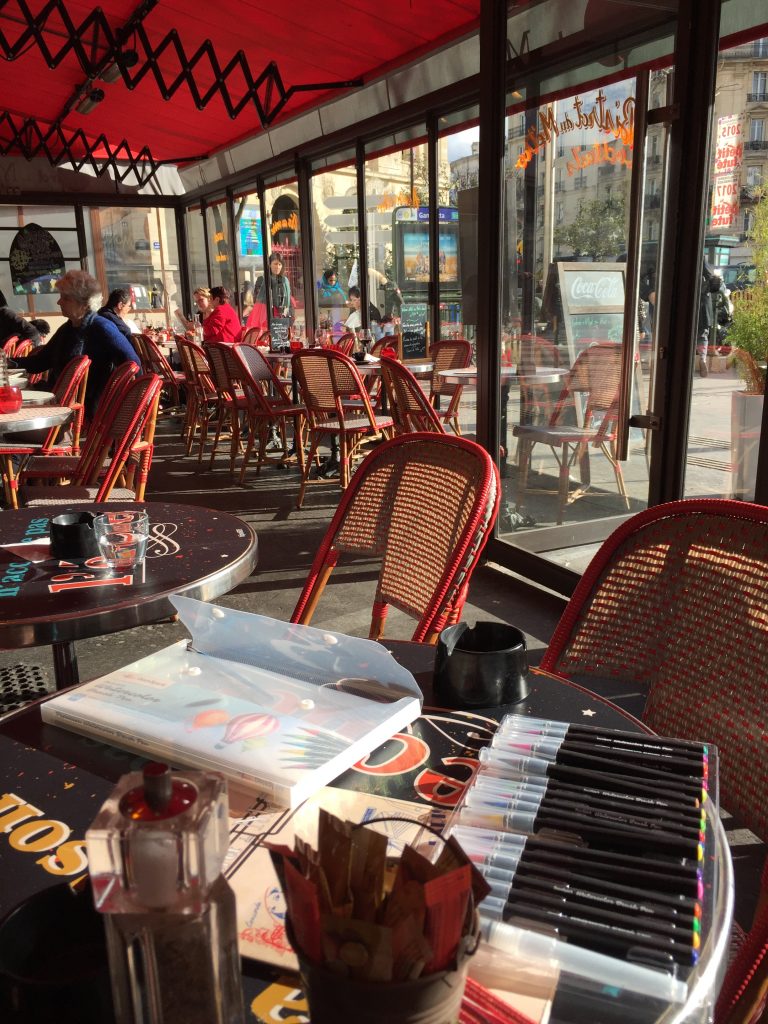
After lunch we were off to see Park des Buttes, a little oasis in the 19th arrondissement. The park took its name from the bleak hill which occupied the site and , had a sinister reputation; it was the site of a gibbet, the notorious place where from the 13th century until 1760, the bodies of hanged criminals were displayed after their executions. After the 1789 Revolution, it became a refuse dump, and then a place for cutting up horse carcasses and a depository for sewage. The director of public works of Paris and builder of the Park, Jean-Charles Alphand, reported that “the site spread infectious emanations not only to the neighboring areas, but, following the direction of the wind, over the entire city. ” In 1864 work began on turning the site into a park and the designer was Alphand who had designed the Bois de Boulogne. A waterfall, a grotto and lakes are spread out over 60 acres at the centre of which is a lake with a rocky island with steep cliffs made from the remains of a gypsum quarry. There’s also a miniature Roman temple that we were able to hike up to for a great view of the park and its display of winter pansies.
We headed back to the hotel for an hour’s r and r – a nap for me and a workout in the hotel’s gym for Anna and then we set off for our evening’s adventures.
But as we exited the hotel we discovered that it was raining – heavily. I hadn’t brought my raincoat with me that evening and so I ended up getting my down jacket soaked though, all the way to the inner lining. Not a smart thing to do. I suggested that we took the funicula up to the top of Montmatre, since I’d missed that experience by walking up on my first morning, and though the windows of the cab were streaked with rain we had a glorious view of the floodlit church.
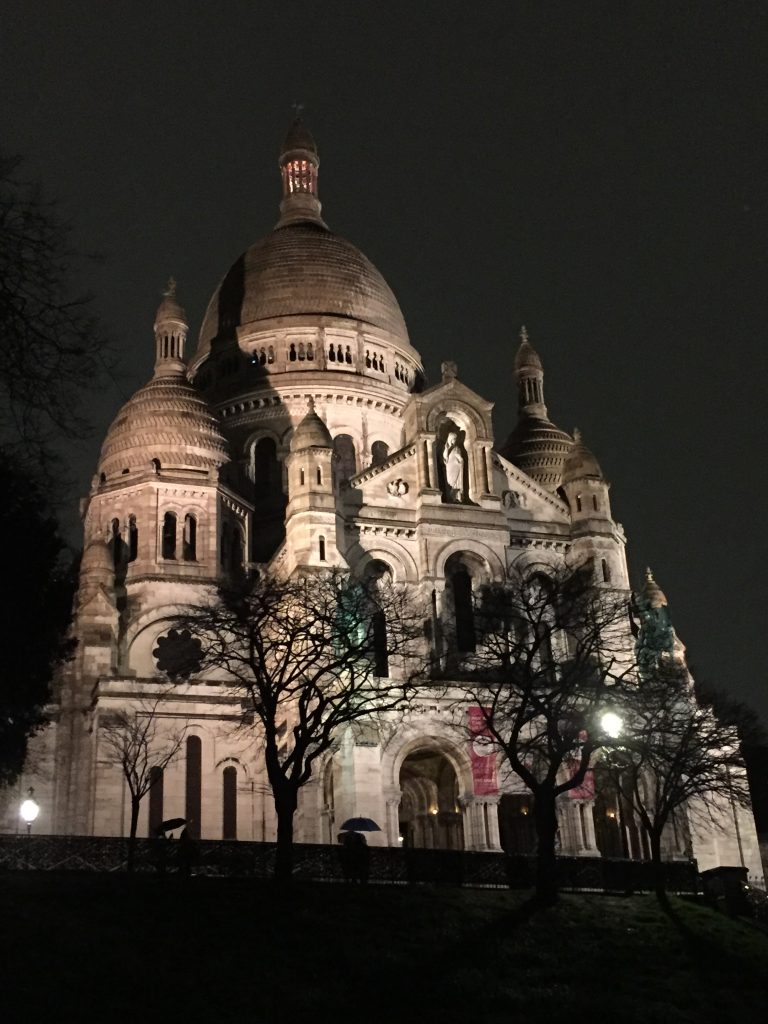
We were heading for dinner at Deux Moulins, a restaurant where the movie Amelie was filmed. This entailed quite a walk through Montmatre with the city lights reflected in the puddles and spray kicked up by passing cars and bicycles.
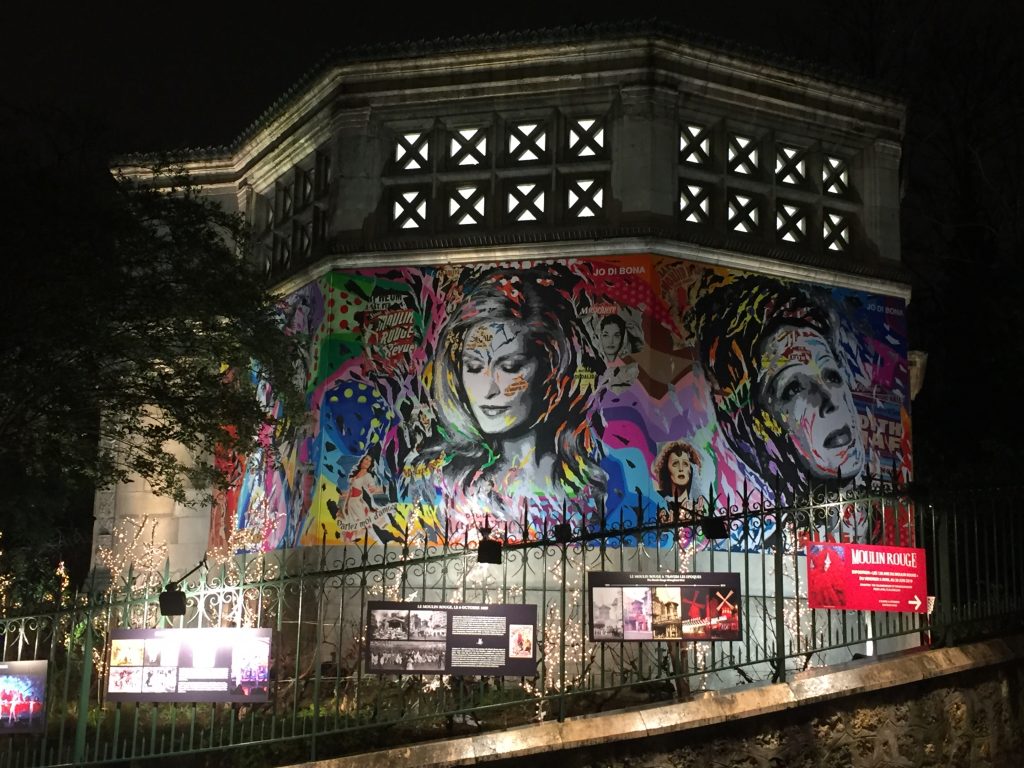
The restaurant wasn’t overly fancy but my dinner of salmon (cooked, this time) with mango, papaya and rice was delicious. Pictures from the movie were framed on the walls and in a display cabinet sat several gnomes. In a window seat was a man eating alone. Across the table from him, watching his every move was an enormous fuzzy teddy bear.
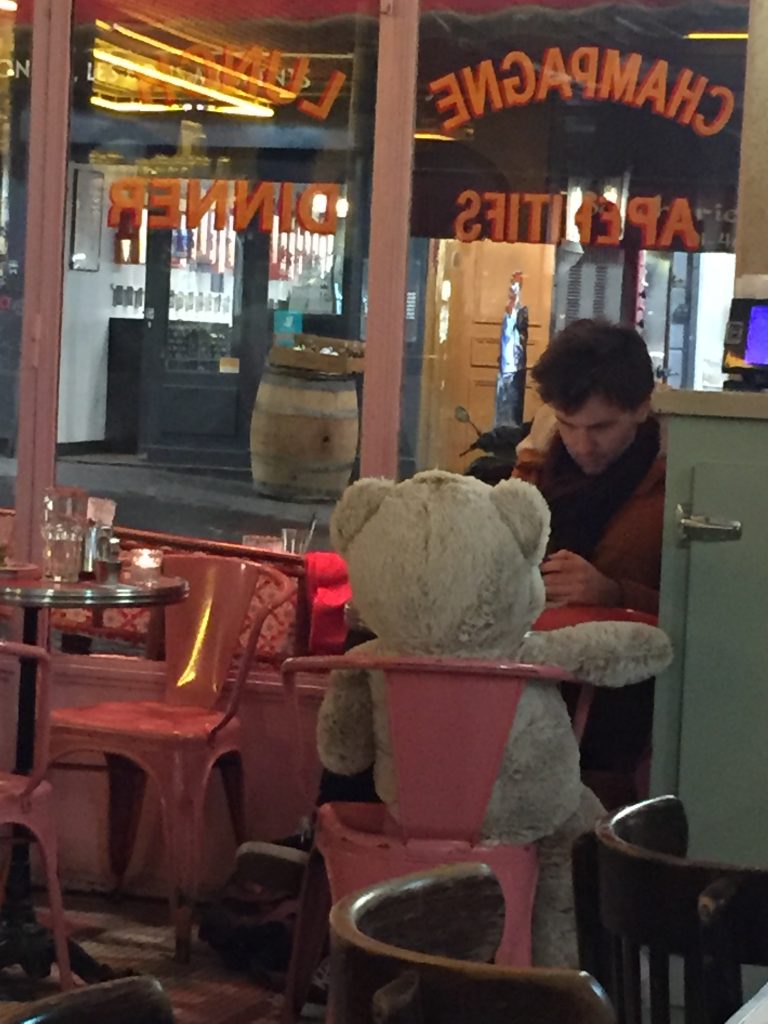
Close to the bar was a piano with the sheet music of the theme tune to the Amelie movie sitting on top. When the waiter came to take our order I pointed to the piano. “You must!’ he replied. He reminded me very much of the stand up comedian I had seen last week in Hebden Bridge, Marcel Lucont (https://marcellucont.com/), flirtatious, expressive, with a winning French accent. After we’d eaten I went over to the piano. The piped music came to a stop and I started to play. It wasn’t until I came to turn over that I discovered that there was no second page. I erupted in laughter as the entire restaurant applauded. That was fun. https://www.youtube.com/watch?v=CiR44lrl4BE&feature=youtu.be
Soon we were on our way to Le Lapin Agile. I’d made reservations online at this cabaret where Debussy and Satie met. Picasso and Modigliani were regular attendees. It’s just a small building like a house. It existed in 1860 under the name Au rendez-vous des voleurs, and twenty years later the walls were decorated with portraits of famous murderers and the place became known as the Cabaret des Assassins.
Tradition relates that the cabaret received this name because a band of gangsters broke in and killed the owner’s son in a robbery attempt. In 1875, the artist Andre Gill painted the sign that was to suggest its permanent name. It was a picture of a rabbit jumping out of a saucepan, and residents began calling their neighbourhood night-club Le Lapin à Gill, meaning “Gill’s rabbit.” Over time, the name had evolved into “Cabaret Au Lapin Agile,” or the Nimble Rabbit Cabaret. The original painting on canvas was stolen in 1893 and a reproduction on timber was painted to take its place. It was very dark inside with minimal lighting. We hadn’t paid online and my name was handwritten on a tiny scrap of paper at the desk. Our coats were taken and we were led to a table in a small darkly lit room where a man was playing the piano. And what a pianist he was. Although the piano was a simple Yamaha the sound quality he got, from the upper notes especially, was amazing.
About 15 people were sat at wooden tables deeply scored with the names of previous visitors, listening to this pianist. The two girls next to us were visiting from Belarus. The walls were filled with paintings and sculptures so that there wasn’t an inch of space remaining. About 20 minutes later 6 people entered and sat at a table together and we presumed they were just more visitors. But then they began to sing along to some of the songs from the piano man and we realized that this WAS the cabaret. The ‘real’ guests joined in with the singing of many of the songs, and one by one the artists sang solos and did turns on the piano. Judging by the reaction of the visitors many of the songs were hilariously funny but, of course, they were all in French, so we just watched, which was almost as much fun. https://youtu.be/tjtTqByI-gw
One singer accompanied herself on the piano but stood with her back to the keyboard and played it behind her back. It was almost midnight when we left this wonderfully evocative place that had been the starting point for so much music and art. We took a taxi back to the hotel where my sodden coat dried out overnight perfectly in the heated bathroom.
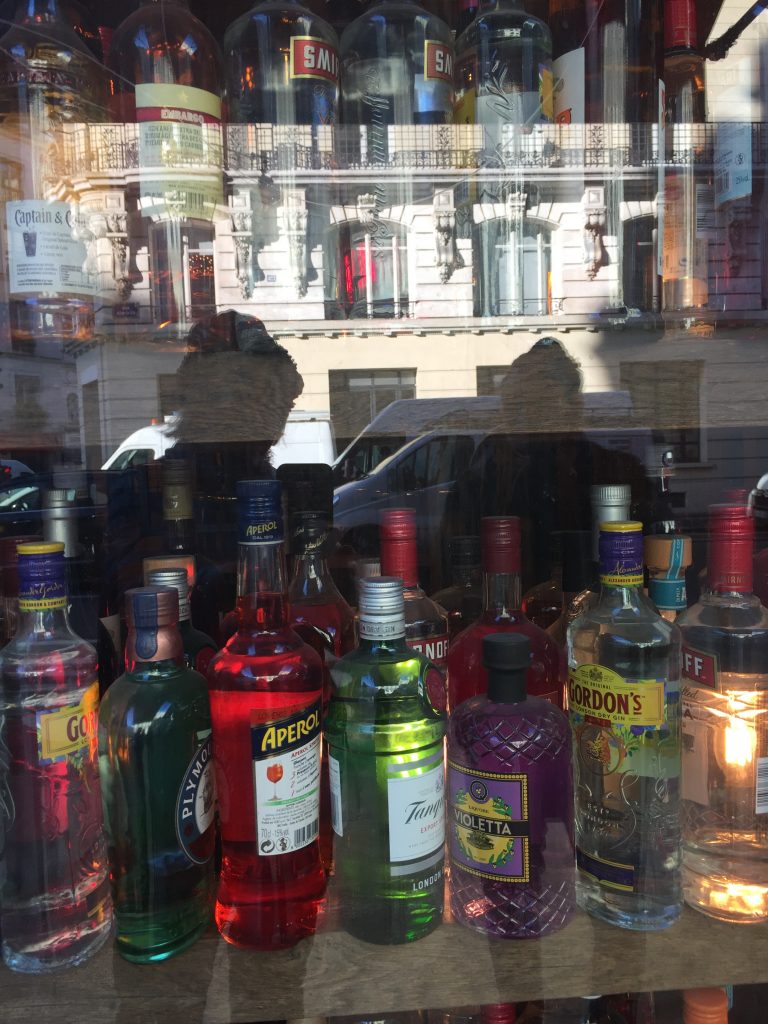
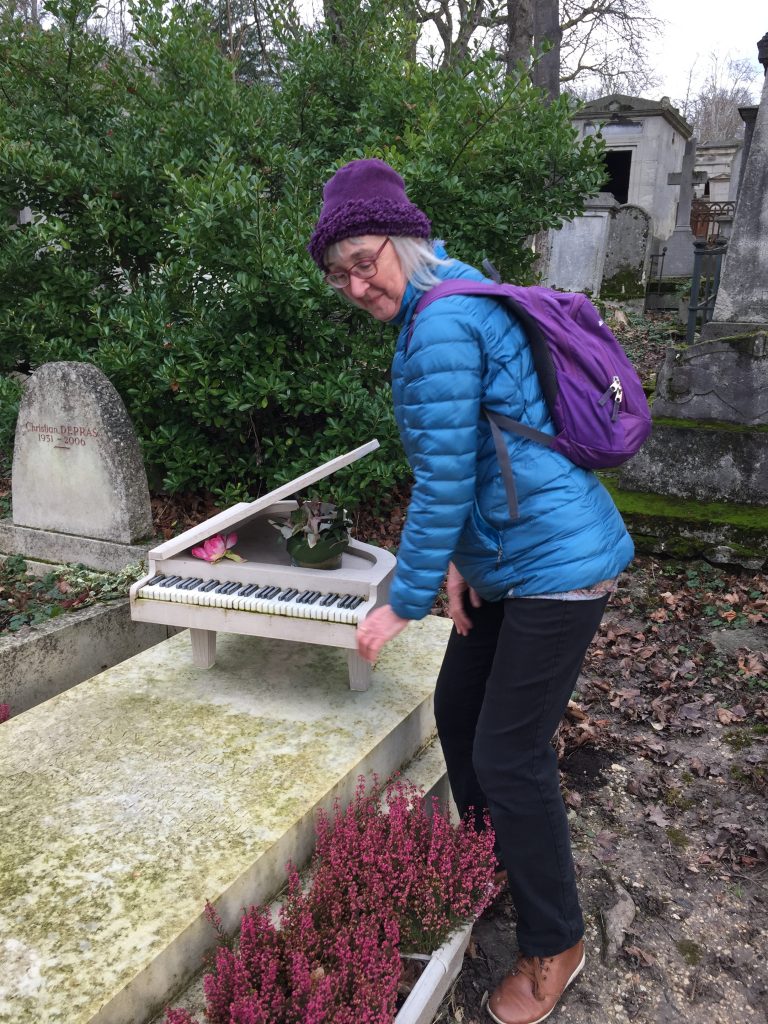
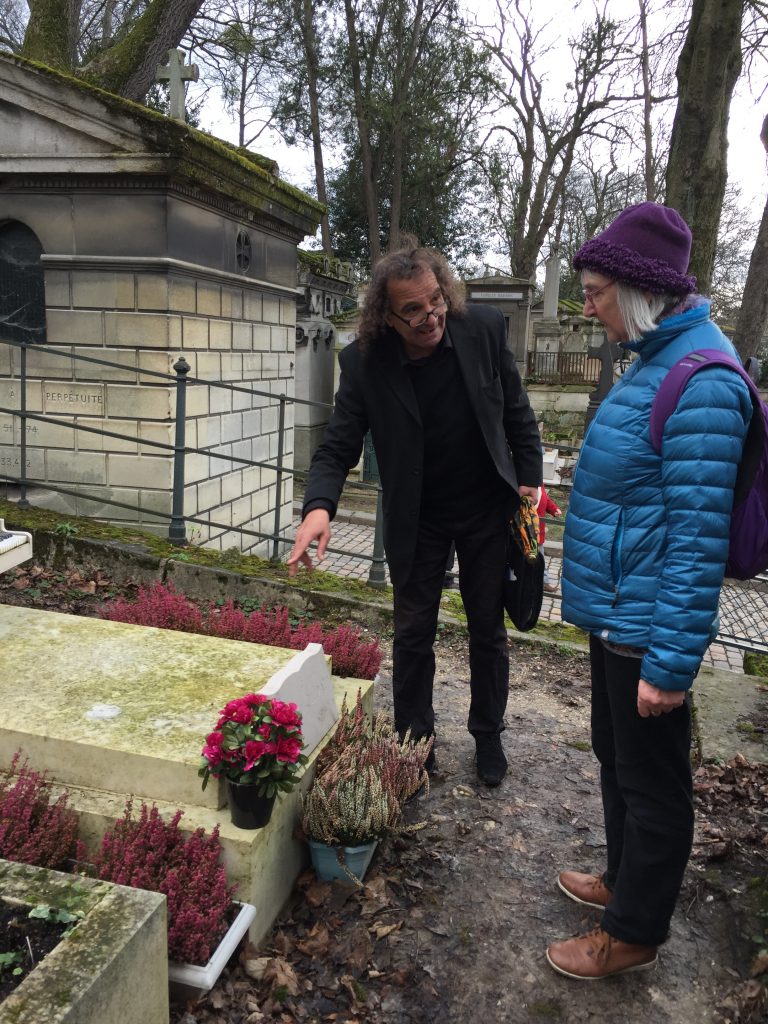
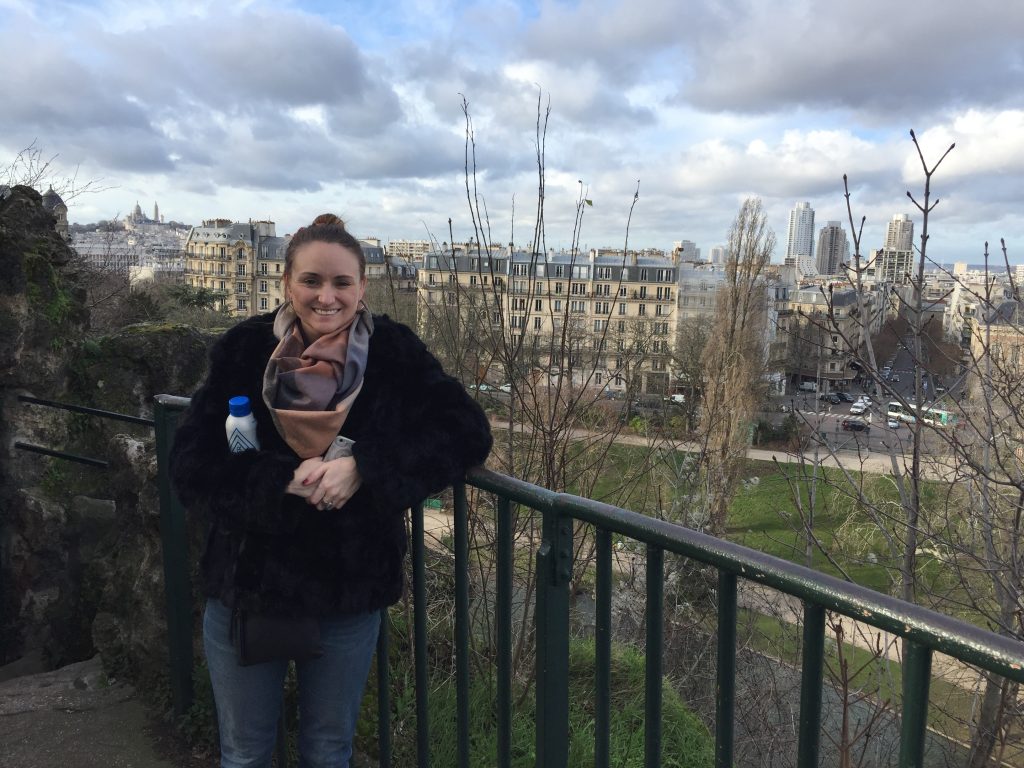



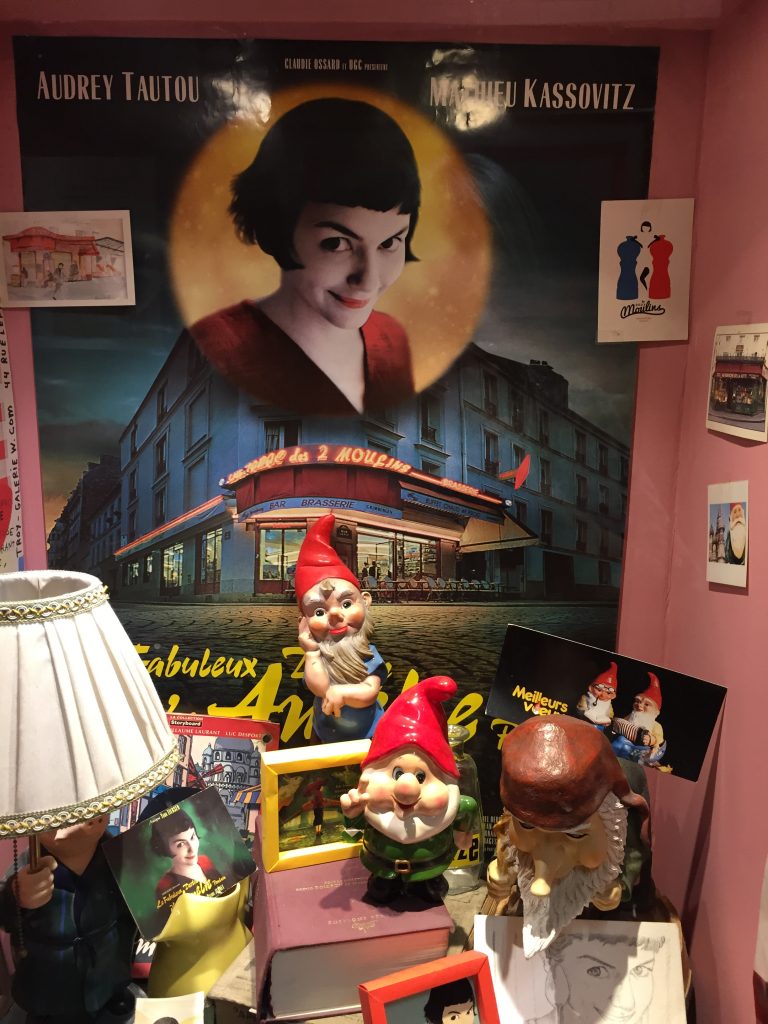
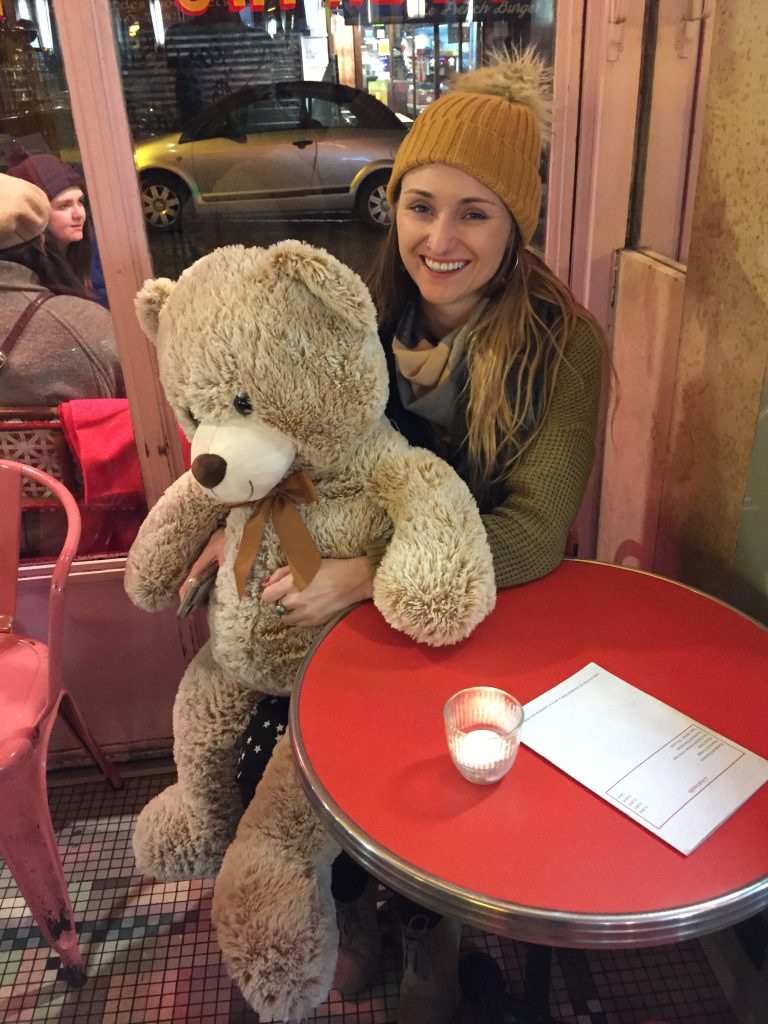

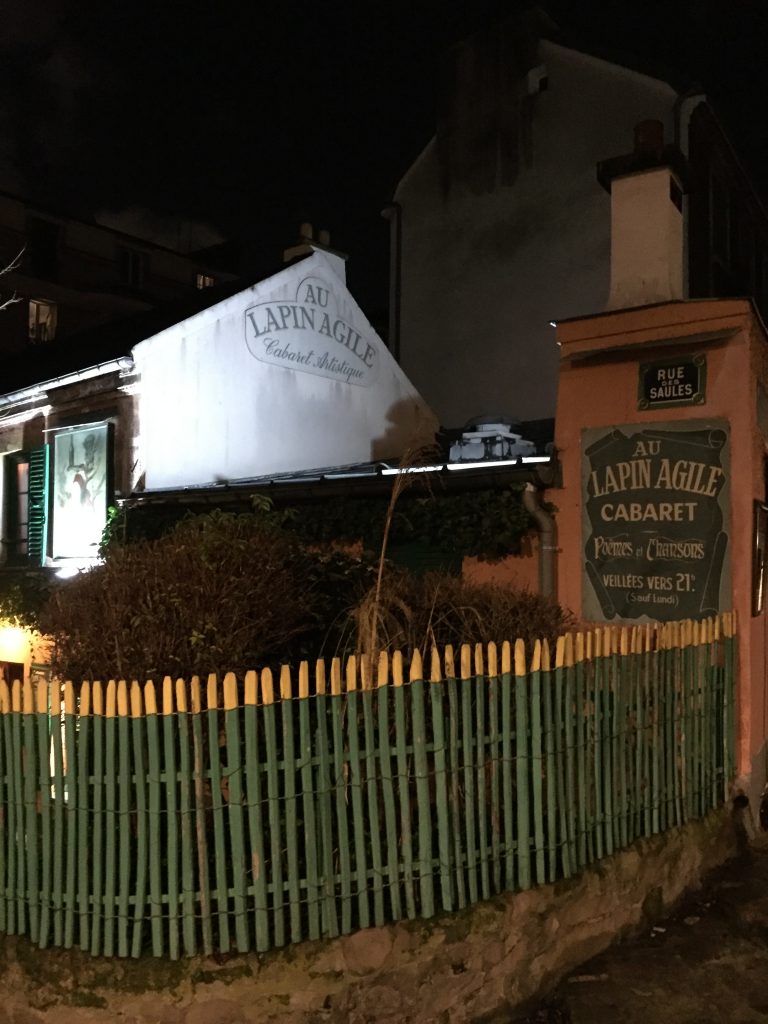
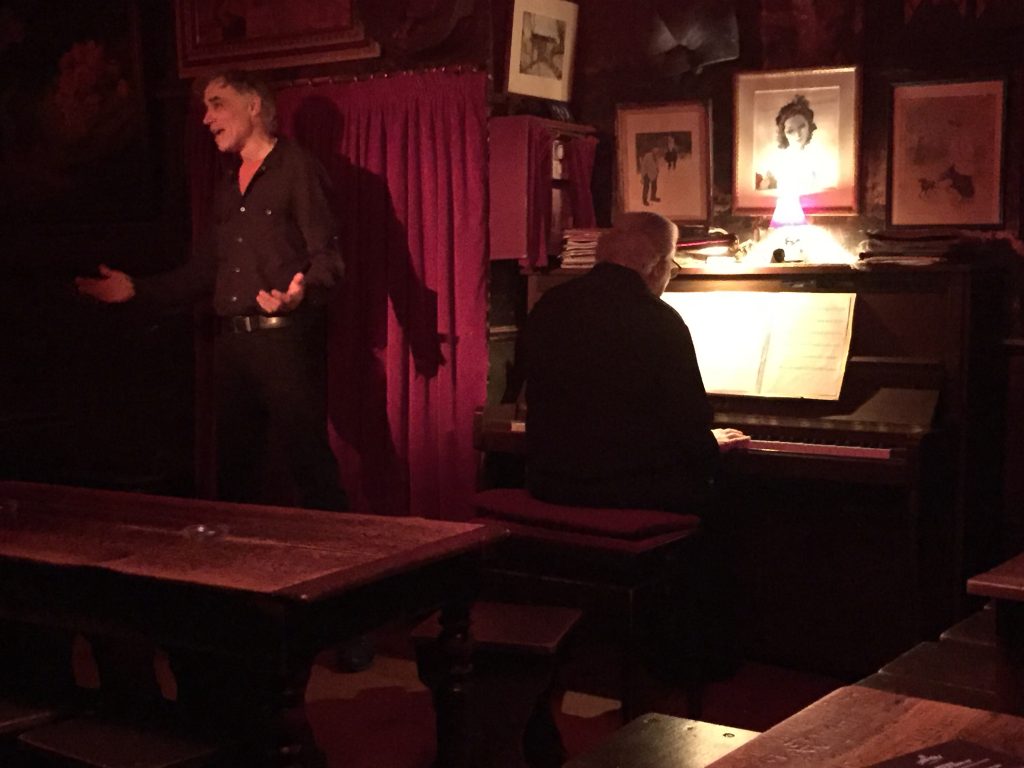
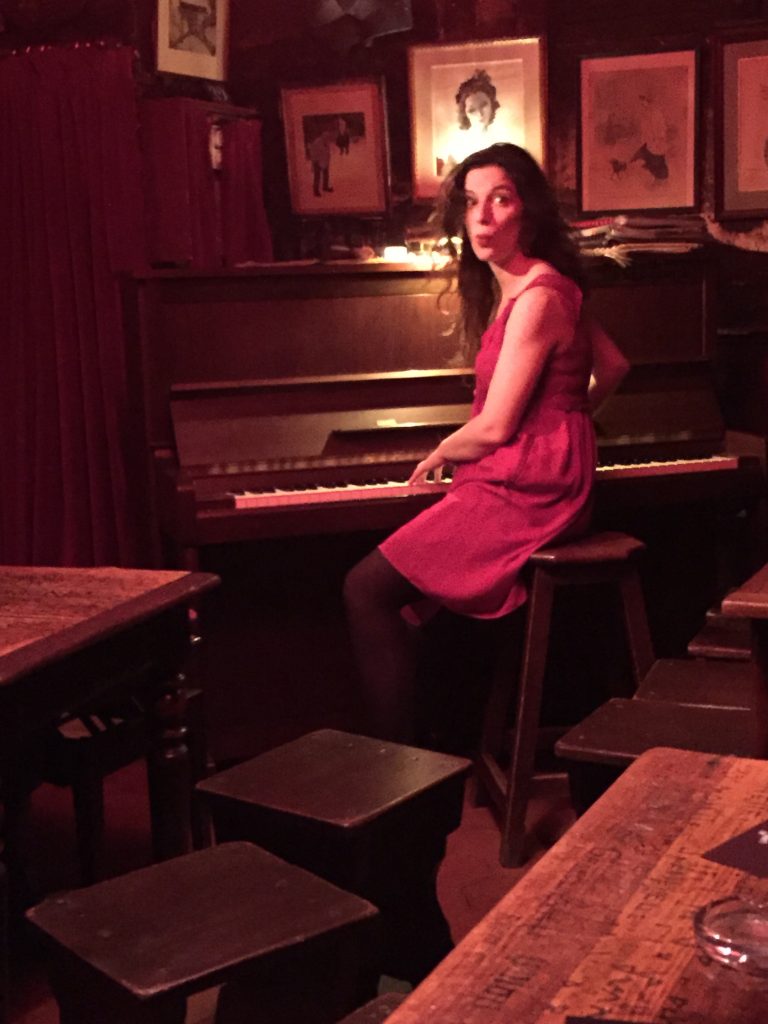
Leave a Reply